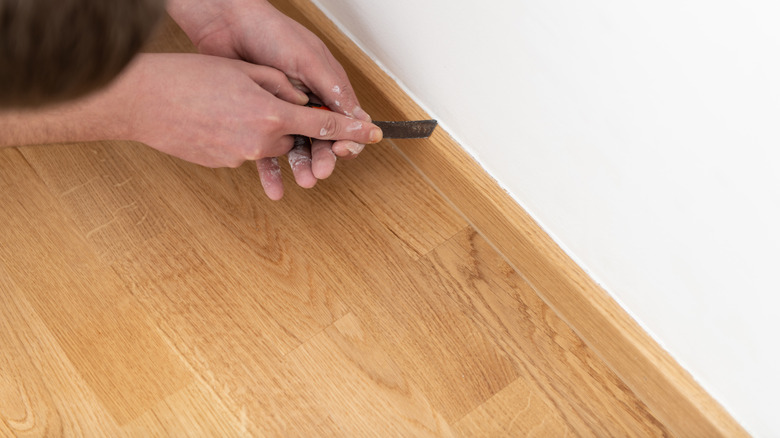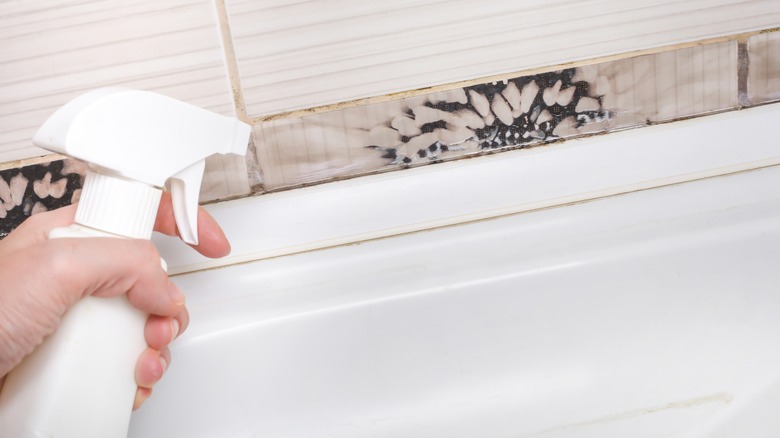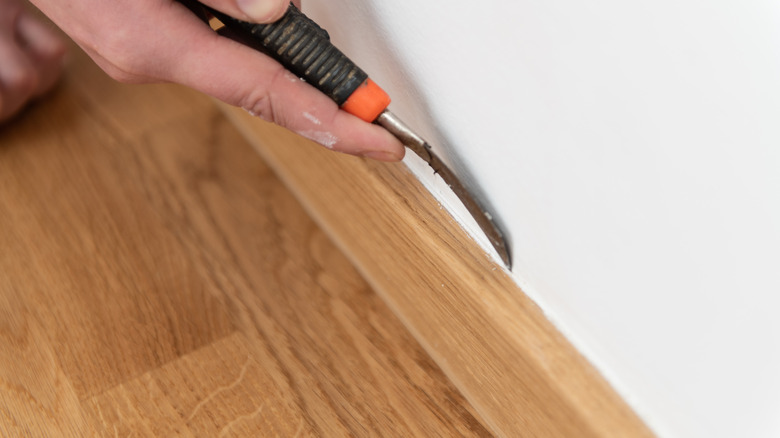How To Effectively Remove Caulk From Your Surfaces
If you're looking at the edge of your tub or baseboards, and you see an icky, hard-to-clean seam between the tub itself and the surround, then you might need to refresh the caulk. As caulk ages, it starts to yellow and get brittle. Moreover, no matter how often you scrub the area, dirt seems to accumulate over time, especially if the caulk wasn't applied correctly the first time around. At this point, you might consider removing the old stuff and replacing it with the new.
As you may know, removal is not always easy, but it's definitely possible to get it completely out of the way. This is why we've done our homework to be able to offer advice about how to remove caulk from your wall. First, you'll need to gather the necessary supplies for this task; these include a chemical solution that softens the caulk, which you can find at any hardware retailer, or isopropyl alcohol might work just as well. You'll also need a caulk removal tool, a razor blade or scraper, and some pliers in case you have to dig out any hard-to-reach remnants. And don't forget the work gloves.
Prepping the caulk
Softening the caulk prior to removal makes the task go more quickly and further enables you to remove every single piece. Which type of caulk remover you choose depends on the type of caulk that needs to be taken out. For caulk that's not extremely hard, you can apply isopropyl alcohol and allow it to sit for a few minutes. Also, you can try using a hair dryer on a warm setting to soften the substance before you try scraping it off.
If this process doesn't work, then you'll need to apply the specialized solution for removing caulk from the surface. However, you might read the label before making a final purchase since some caulk removers work better on silicone or other caulk ingredients than others. Plus, you'll need to follow the instructions closely because some solvents require different wait times. Also ensure that you have plenty of ventilation because, most likely, the removal product will emit a lot of fumes. After you've applied your caulk remover of choice and waited for the right amount of time, you can check to see if it's soft using either the removal tool or another sharp point.
Cutting and scraping the caulk
Once the caulk has softened up quite a bit, then you can use the removal tool or the scraper to carefully cut it. Ideally, you can scrape along the edge of the bottom of the caulk while lifting it up and away from the surface. This method works best if the caulk is not embedded into a deep crevice. However, you'll need to be careful not to scratch the surface itself. Another way to approach this part of the task is to take the pliers (preferably needle nose) and, starting at a corner, use one of the tips to gently scrape into the caulk to where you can get underneath it. From there, use both tips to pull up as much of the piece as possible.
After removing the caulk, you might have some small residual pieces left on the surface. You can take the scraper or another tool that has a sharp, thin blade and gently scrape off the remnants from the surface. Anything else that's left over can usually be scrubbed off.


